What can one say about this winter’s weather? Perhaps we, in most parts of the UK, have been lucky in terms of not having to contend with heavy snow and few heavy frosts to date?
This has though, brought about an early spring spurt of growth to our lawns and natural grass playing surfaces. I have already started a programme of mowing to tidy up a few bedraggled lawns.
This early spring growth is purely down to the exceptionally warm temperatures we have been having, with February achieving the highest temperatures ever recorded for the month.

A bumpy cricket outfield
I personally believe we may be between 2-3 weeks ahead. Many spring flowers and bulbs seem to have burst into colour earlier this year, and the grass has started growing.
We have also experienced plenty of rain during this winter, with many lawns and sports fields becoming saturated and waterlogged. This spell of wet weather has also curtailed the start of essential pitch preparations for many cricket clubs.
It is now a case of being patient and waiting for the wet ground conditions to dry up. We usually do get some easterly drying winds in March, coupled with sunny spring days.
The combination of the two will certainly help and enable turf professionals to get on with their spring renovations.
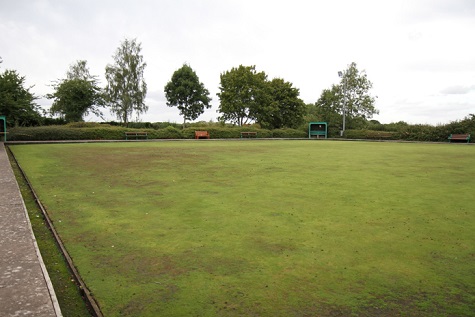
The following activities are generally implemented during a spring renovation programme and are usually carried out in the following order:
- Mowing the sward, preparing surfaces for renovation.
- Weed & moss treatment
- Scarification; removal of unwanted debris.
- Aeration; decompaction of soil, improving air and gas exchange in soil.
- Top dressing; restores levels and improves surface drainage.
- Overseeding; restores grass populations.
- Fertilising; provides nutrients for grass growth.
- Brushing to incorporate dressings and to help the grass stand back up.
- Watering / irrigation.
- Weed control may be dealt with prior to the renovation. Any accumulated moss growth should be dealt with by applying an approved moss killing chemical, or lawn sand. Wait for it to die, then remove by scarification.
Mowing: The grass is usually mowed prior to starting any renovation works. The objective of mowing is to clean and prepare the grass surface.
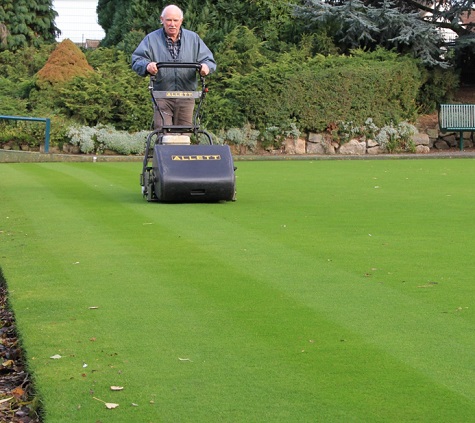
Grass growth in spring can be uneven and varied. Mowing the grass to a uniform height will help prepare an even surface for scarification and topdressing operations.
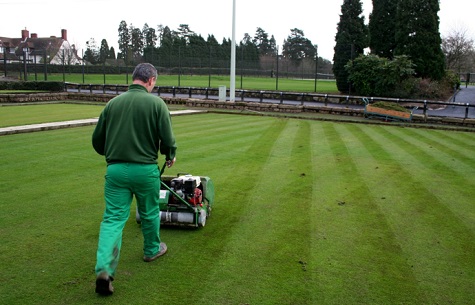
Scarifying / Verticutting : During growth the grass plant produces a lot of dead material above and below ground level. Above ground (thatch layer): dead and decaying leaf and root material develops and accumulates to form a thatch layer of matted material. This layer of thatch can create a microclimate that is detrimental to turf, preventing water infiltration and providing ideal conditions for fungal and disease establishment.
Below ground (mat layer): root growth involves increased biomass of the root system and, like the grass shoots above the ground, some of this new matter dies back leaving a dead mass of root material which can often prevent and restrict new root growth and affect gaseous exchange in the soil. It is important to remove this debris.
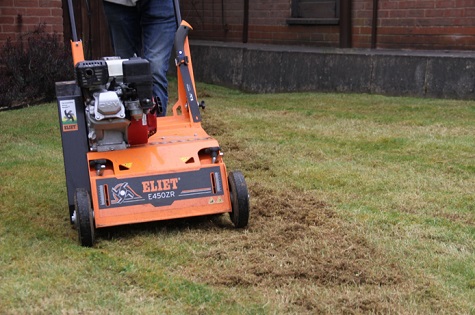
Scarifying / verticutting is the term used to remove this unwanted vegetation. There are many ways and methods of scarifying lawns and turf surfaces. The process usually involves a raking / cutting action to clean out the thatch debris and can be done manually using spring tine rakes or mechanically using specially designed rotorakes, verticutters and knife action machines.
There are many different types of machines designed and available for scarifying turf, all offering different cutting depths, with different power and speed variations, with and without collection boxes. Machines can come in many shapes and sizes, some are pedestrian, some tractor/ prime mover mounted.
The depth of penetration for effective scarifying must be through the mat layer and into the soil. For an effective, vigorous scarifying, the blade should be at least 3 mm wide. Scarifying in two directions, at an angle of less than 90 degrees, gives the most vigorous working. Scarifying at right angles has the tendency to cause severe damage, with the small squares of turf being ripped from the surface. To restore the playing surface after vigorous scarifying will require an application of top dressing materials to restore levels and provide a seed bed for grass seed.
Aeration: Aeration is an important part of the renovation programme. Not only does aeration remedy any compaction problems by restoring and improving air movement in the soil profile, it also provides channels and openings for the top dressing materials to integrate, particularly if hollow coring or hollow tines have been used.
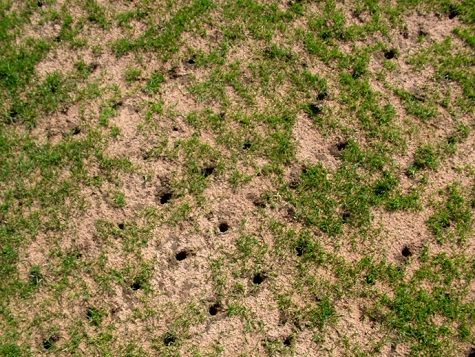
Depth of tines can vary between 100-200mm depending on the type of aerator being used.
Top Dressing: The application of a good quality top dressing, in combination with a suitable aeration programmes, will go a long way to counter the ravages of wear /play.
Benefits of top dressing:
- Restores surface levels.
- Stimulates new root and shoot growth.
- To cover seed (soil seed contact to initiate germination).
- Increases water holding capacity of the soil.
- Improves soil structure.
- Increases nutrient retention.
- Improves surface drainage.

There is a wide range of materials available for top dressing, ranging from straight sands, loams and local soils materials. These mixes can be tailored to suit the customer’s needs, and can range from 80/20, 70/30 and 60/40 sand/soil percentage mixes.
The success of top dressing will also be influenced by the amount applied and how well it has been worked into the turf surface. Applying too much dressing will have a detrimental effect, smothering out the turf and increasing the likelihood of disease, slow grass growth and, in some cases, will kill the turf.
Overseeding: To re-establish grass cover, it is necessary to overseed the area with new grass seed. It is important to choose appropriate seed It is not cost effective to use cheap or old grass seed stock, as germination and establishment is likely to be poor. Buy your seed from a reputable company which specialises in developing and marketing quality grass seed mixtures. These seed varieties may be more expensive, but they do guarantee quality and performance.
Most seed suppliers will recommend sowing rates but, as a rule of thumb, it will generally be about 35grams of seed per sq/m. Temperatures above 12°C, a moist, well-aerated seedbed, close seed/soil contact are primary requirements for rapid grass seed development.
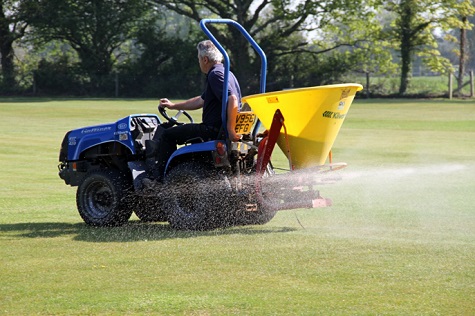
Fertilising: Prior to applying any fertilisers, it is essential to obtain the nutrient and pH status of the soil. This can be achieved by sending soil samples to a soil laboratory which will carry out a nutrient analysis of the sample. Once obtained you will be able to choose a product that offers you the correct N P K fertiliser ratio for your soil.
These fertilisers can be supplied in granular or liquid form. Granular products tend to be more widely used because they are easier to handle and distribute. Over dosing or applying granular fertilisers without enough soil moisture being present may result in the grass becoming scorched, resulting in scarring or death of the grass plant. Fertiliser application is only effective if you ensure uniform coverage. Granular fertilisers can be applied with either a drop (gravity) spreader or a rotary (centrifugal) spreader.
Brushing / dragmatting / luting: Once all top dressings, grass seed and fertiliser materials have been incorporated into/onto the surface, it is important to work the material into the profile by brushing, dragmatting or luting. These operations ensure the materials are worked in evenly and prevent any excess material remaining on the top. This operation is best done when the surface is dry, enabling the material to distribute itself easily.
Irrigation / watering: To renovate successfully, adequate water must be available from seeding through to completion of germination. Try not to allow newly overseeded areas to dry out once watering has commenced. Initially, maintain a constantly moist seedbed with frequent waterings of short duration. As newly germinated seedlings begin growth, decrease the frequency, and increase the duration of watering to encourage deeper rooting.
Conclusion: Lawn and sports turf renovations is often a time consuming and expensive exercise. Successful renovation requires detailed planning and programming, to ensure the right materials and equipment are available and working throughout the renovation process.